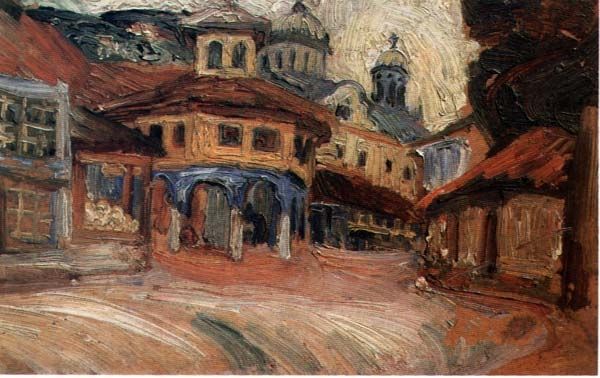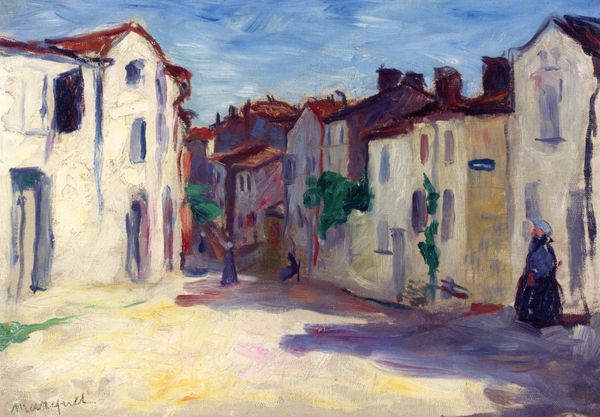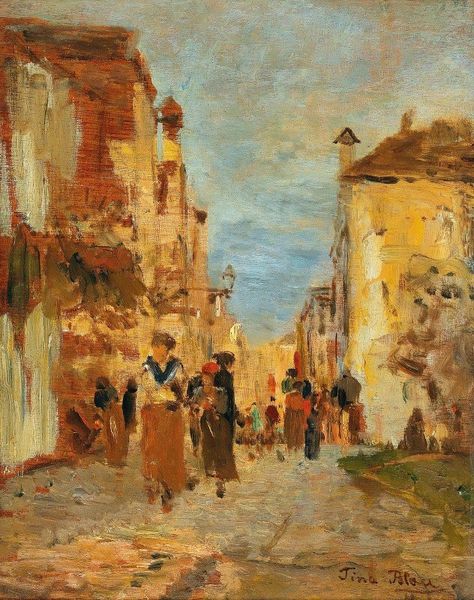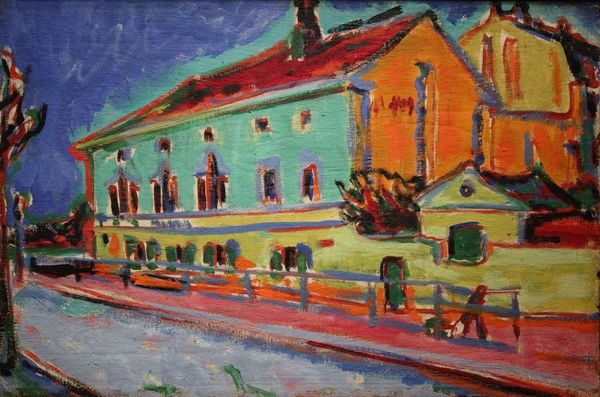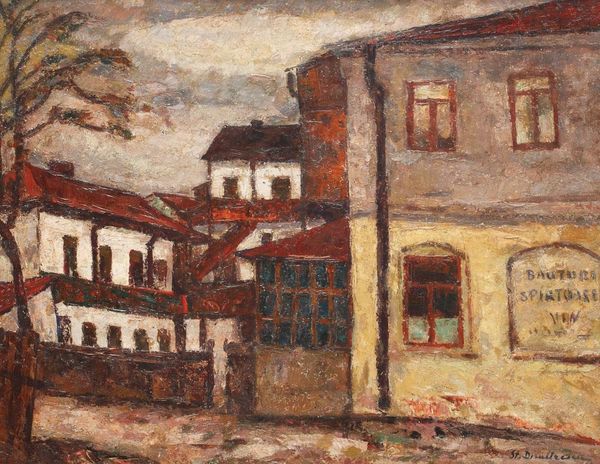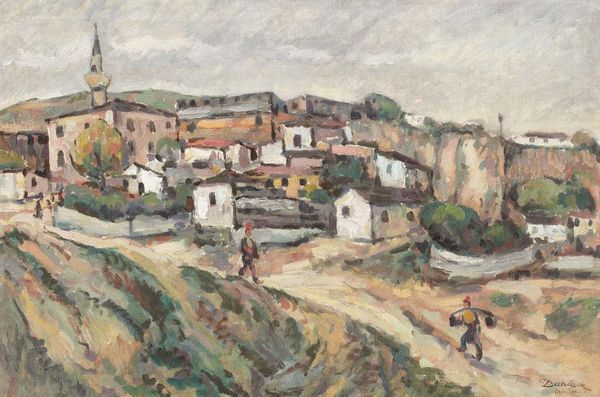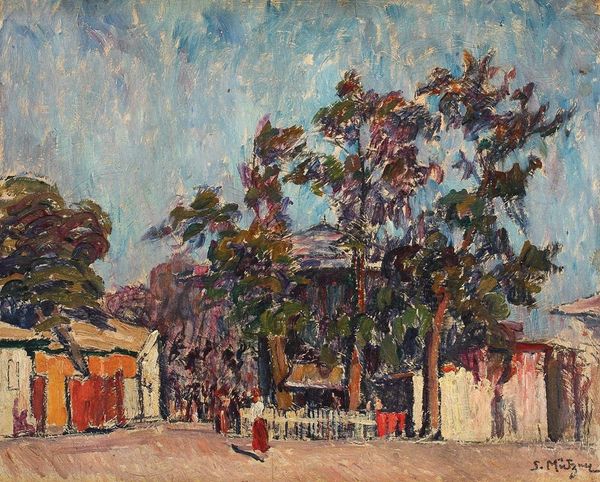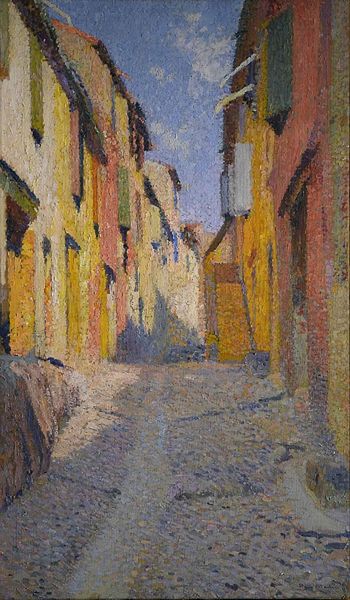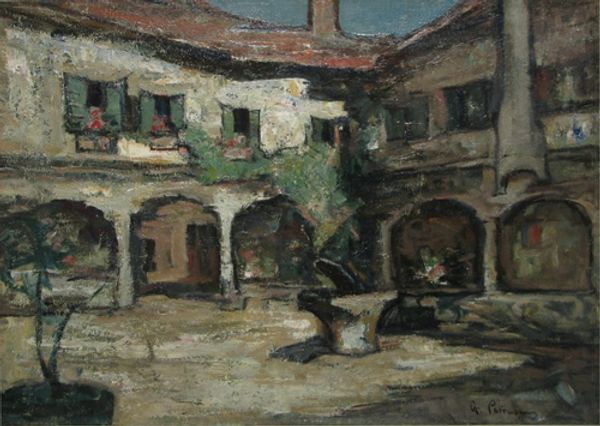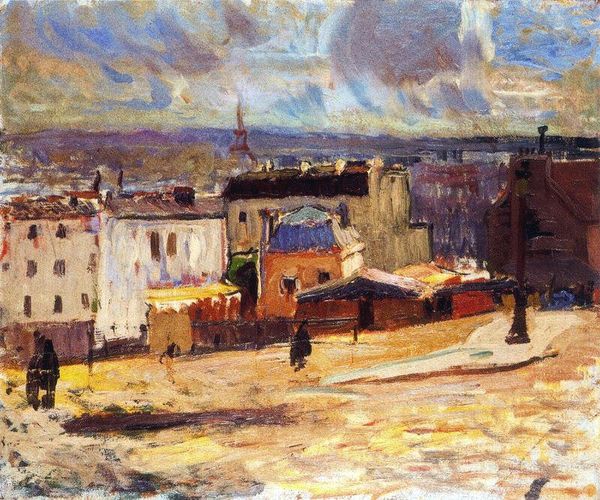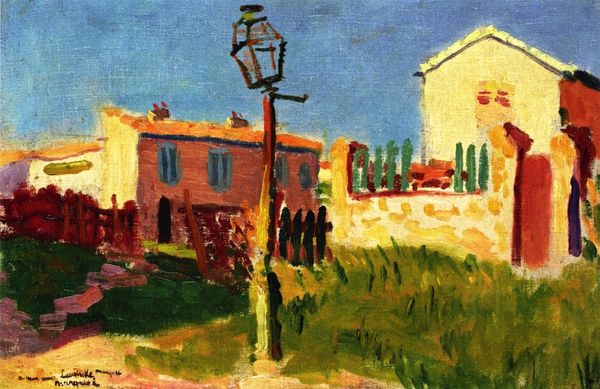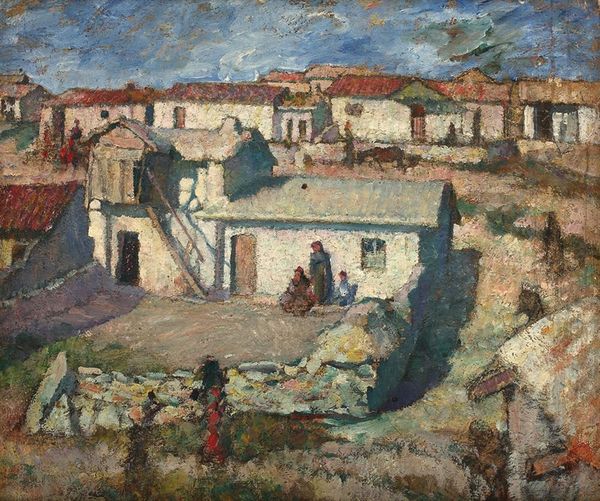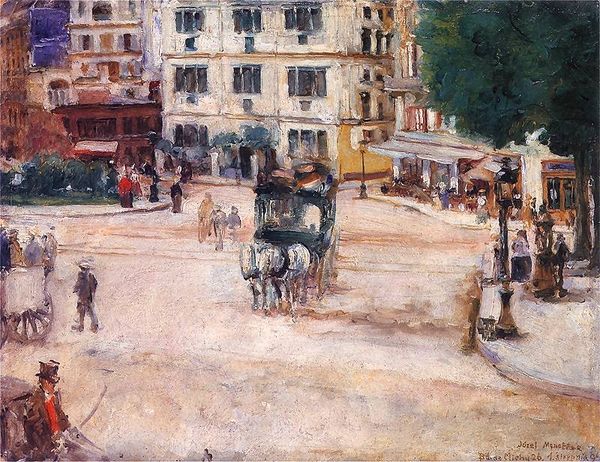
painting, plein-air, oil-paint, impasto
#
painting
#
impressionism
#
plein-air
#
oil-paint
#
landscape
#
impressionist landscape
#
oil painting
#
impasto
#
cityscape
#
genre-painting
Copyright: Nicolae Darascu,Fair Use
Curator: "Turks in Tulcea" attributed to Nicolae Darascu. It presents what appears to be a street scene rendered in oil paint. The texture looks quite thick. Editor: Yes, that impasto practically pulls you in. My initial impression is a scene of quiet, everyday life under an unassuming sky. Those red fez hats punctuate the otherwise muted color palette, a strong symbolic statement amidst the ordinary. Curator: The subject's ordinariness is precisely the point. I'm interested in the facture, the visible brushstrokes, the materiality. Darascu's technique seems deliberate, more focused on the act of painting itself rather than aiming for photorealistic representation. What materials did he have at his disposal and what choices were made that relate to accessibility and perhaps class. Editor: Well, red has always been loaded with symbolism - power, passion, sacrifice... those fezzes identify the figures and situate them in a particular historical context. Don't you think that color, in itself, tells a story about who they were and their position within society at that time? Their position tells an important narrative. Curator: I suppose I see those hats, and the brushstrokes that define them, as indications of a specific moment in art history when artists increasingly emphasized the physicality of the medium. Consider how Darascu renders the buildings. Editor: To me the architecture almost feels like a stage set, creating an ambiance for their daily lives. The lack of rigid definition in the architectural elements perhaps suggests that the emphasis is more on cultural experience. I do agree that those architectural blocks definitely frame them, and it seems more emphasized than just the style. Curator: Agreed. And yet, in using impasto techniques so liberally, Darascu foregrounds the labor, the material process, forcing the viewer to confront the painting as a constructed object, and not only the buildings as such. It bridges "high art" with craft in some way. Editor: It certainly opens a portal to ponder social structures that produced this type of clothing and also, conversely, shaped by the impact it created visually in a town such as this one, where identity and status must have been an intriguing blend. It lets us ask more. Curator: An intriguing piece that speaks volumes, whether regarding artistic practices or the cultural narratives interwoven into everyday existence. Editor: Indeed. I am finding this a piece to truly contemplate, one brushstroke, and one fez at a time.
Comments
No comments
Be the first to comment and join the conversation on the ultimate creative platform.

